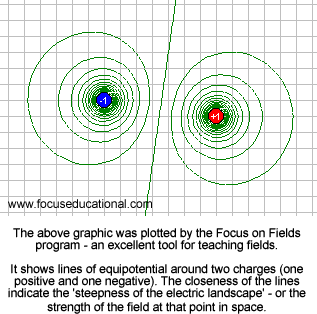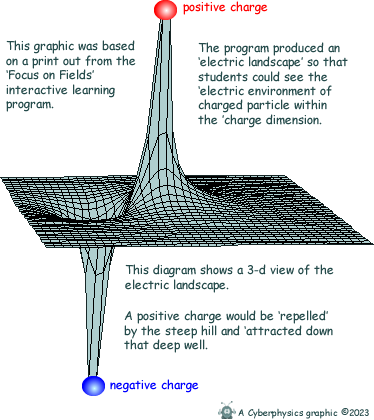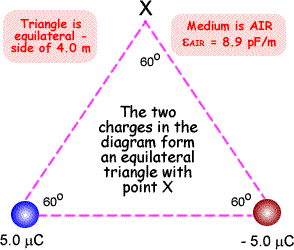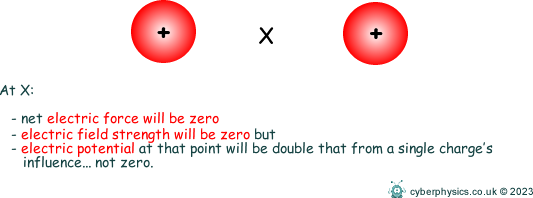Electric/Electrostatic Potential Electric (or electrostatic) potential has the symbol: V It can be defined as:
OR
It is a scalar quantity It is measured in volts (V) - which can be confusing an lead to you writing things like V = 4.56V - which is obviously wrong mathematically - so develop a style for writing the V for electric potential in a different way to the V you use for volts! The equation:
Potential differenceThe difference of electrical potential between two points is known as potential difference or voltage.
A stationary ball will always roll downhill if placed on a sloping surface - moving from a higher gravitational to lower gravitational state. It will remain stationary on a level surface - as thereis no route to a lower gravitational state. Now imagine an 'electric dimension'. One where charges are much more important than mass. Charges create the landscape that all other charged objects react to. Look at the above definition of electric potential and think of it in terms of graviational potential. We could say that gravitational potential (position in the gravitational field) is the potential energy per unit of weight associated with a gravitational field - the two are comparable:
Electric potential is a scalar value.This concept gives people problems because Electric Potential has a sign (positive or negative). You need to think of the sign as an indication of whether that point in space is above or below the zero plane. To work out the potential of a point affected by the fields of several charges you need to work out what effect each charge has on the height of the 'terrain' at that point. A positive charge will lift it above zero and a negative charge below zero. You simply add the 'adjustments in electric height' together to get the final value. Sample Question:
What is the electrostatic potential at point X?
V = Q/(4πε0r) The positive charge: V = 5.0 x 10-6/(4π x 8.9 x 10-12 x 4.0) V = 1.12 x 104 V The negative charge: V = - 5.0 x 10-6/(4π x 8.9 x 10-12 x 4.0) V = - 1.12 x 104 V
Vx = 1.12 x 104 - 1.12 x 104 Vx = 0.0 V The result from the positive charge is 1.12 x 104 volts - this means that point X is 'lifted' by the presence of that charge and from the negative charge it is -1.12 x 104 volts - meaning that point X is lowered by the presence of that charge. The sum of these is zero volt potential (X is at zero potential - the same level as it would be if no charges were present at all!). If electric field strength is zero it doesn't mean electric potential is also zero
"Electric potential is zero whenever the electric field strength is zero" This is a FALSE statement, but many students couldn't see it was false ! Electric field strength or intensity is a vector - so if equal pulls or pushes act on the 'test particle' at the point in space you are looking at they will cancel each other out. BUT the potential at that point in space will be subject to the change in potential due to the influence of all charges in the locality. Look at the diagram. X is the mid-point between two identical positive charges::
The positive charges both push a positive test charge with equal force cancelling out the acceleration effect. The electric field strength at that point is therefore zero. BUT both charges have an effect on the electric potential of point X. The presence of one of them makes it harder to bring unit positive charge from infinity but the presence of the second one makes it twice as hard!. It is as if that point in 'electric space' is raised twice as high by the second charges presence. You can think of electric potential as "pressure."
|
Follow me...
|










